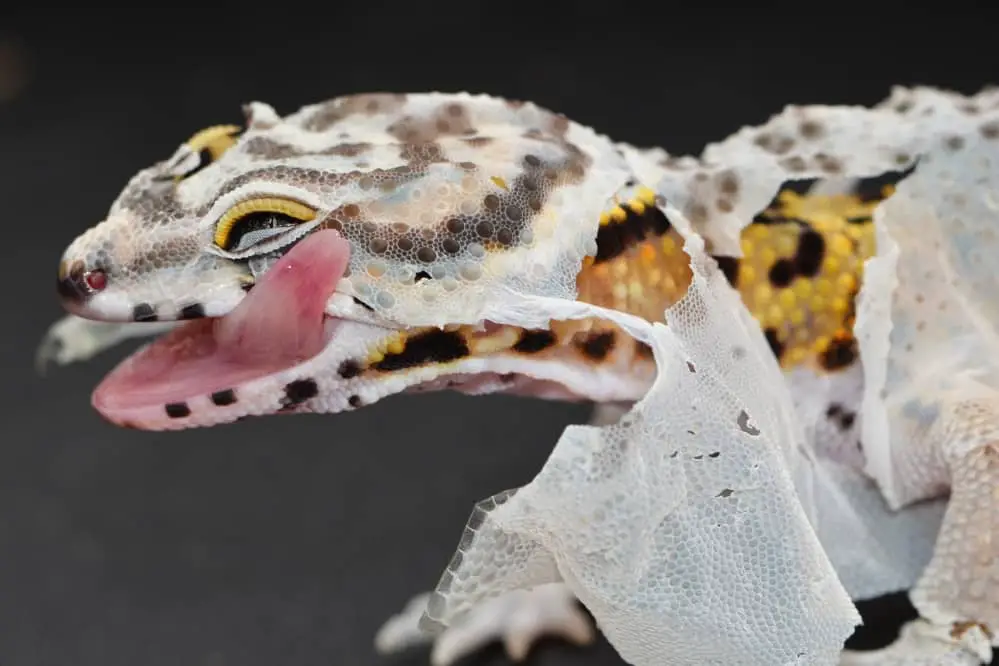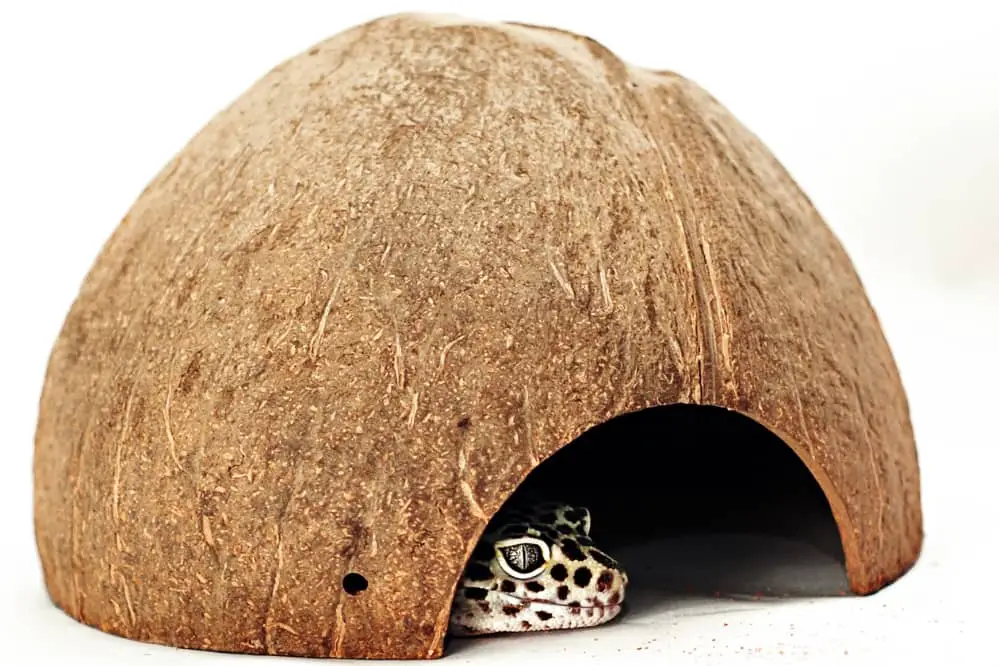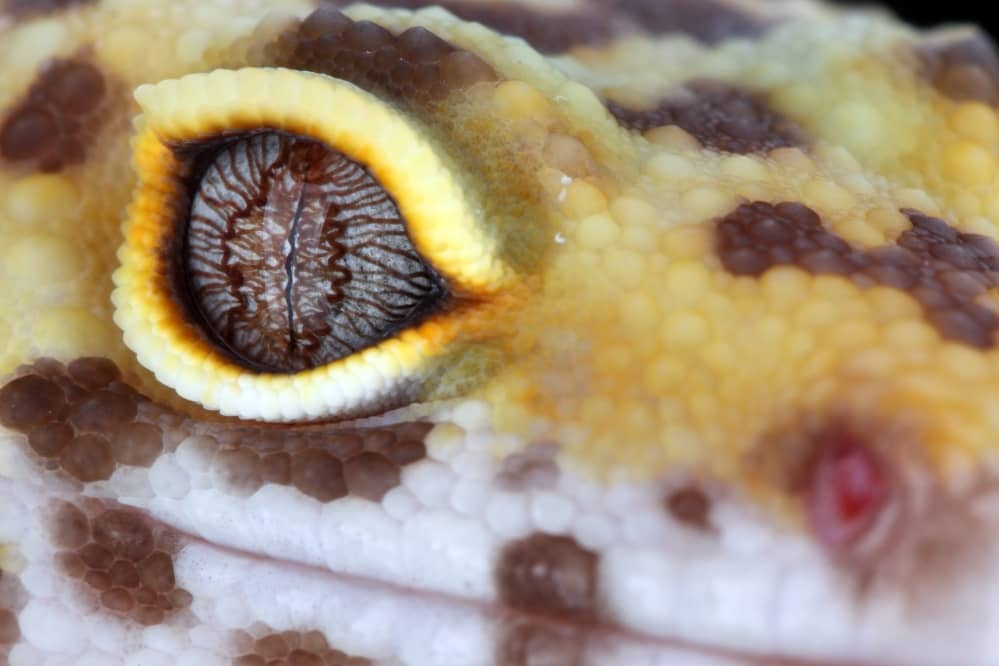Large, round eyes make leopard geckos adorable and curious-looking pets. Sadly, they commonly suffer from eye illnesses, most of which are caused by poor environmental conditions.
When their eye is irritated, leopard geckos close only one eye. This might be caused by debris under the eyelid or a stuck scale during the shedding process. Infections, starvation, and low humidity can all lead to this condition. However, having one eye open is occasionally a good activity, such as sleeping. There are several solutions to the problem of aberrant eye-opening.
By reading on, learn why this occurs and what you can do to keep your leopard gecko healthy.
Why Your Leopard Gecko Closes One Eye
First, don’t be frightened if your leopard gecko occasionally closes one eye. No, they are not winking at you, but you should be concerned if one eye is closed for an extended time.
If you’re concerned that your leopard gecko is closing its eye for extended periods, you’ll need to determine the underlying cause to assist your tiny lizard friend. Remember that the eye is one of the most delicate parts of a leopard gecko’s body, so handle your pet with extreme caution. Here are some of the most prevalent reasons your leopard gecko could close one eye.
Trauma
Even in protecting your aquarium, a leopard gecko may sustain eye damage. This can manifest as a scrape or bruise to the eye or the area surrounding the eye. Be very cautious if you house more than one leopard gecko in the same tank, as they can be rather aggressive, especially if at least one is a male.
Excess Skin
You will want to ensure that your leopard gecko has healthy shedding. Leopard geckos, unlike many other lizards, have eyelids. Hence they also shed skin on and around the eyelids.
If there is retained or adhered skin near the eye, your leopard gecko may be unable to open its eye without experiencing irritation.

If the skin under the eyelid has shed and become adhered, it can cause significant corneal damage over time. This requires an expert to fix it.
To prevent shedding issues in leopard geckos, you should place a damp hide in their enclosure. Use this cave and some sphagnum moss (such as this one) as a substrate for this purpose. When the moss is dry, mist it. In this manner, the cave’s humidity will be relatively high, aiding in shedding.
Eye Debris
It is possible for sand, grit, and even larger particles to become stuck under the eyelid. Typically, the leopard gecko will eliminate this by blinking and secreting fluid around the eye, but occasionally this method is ineffective. If you observe bulges under the closed eyelid, this may be the problem.
Due to Dry Eyes
The eyes of leopard geckos release a fluid that keeps them moist and free of dirt. If your leopard gecko is not receiving enough water or its tank’s humidity level is improper, its eyes may dry out and clump together. The mucus produced by an illness can also impede your pet’s ability to release the necessary fluids.
Due to Infection
Leopard geckos are susceptible to three distinct forms of eye infections. These include:
- Viral
- Fungal
- Bacterial
These three substances can enter the eye, particularly if the cornea or pupil is damaged. This can cause considerable harm, affecting the eyeball’s size by inflammation or mass reduction.
The eyes of leopard geckos contain bacteria such as pseudomonas and fungi such as Acremonium sp., necessitating antibiotic and anti-fungal treatments, respectively.
Conjunctivitis is the most prevalent form of eye infection and is characterized by a red, teary eye. Antibiotic infusions are an effective treatment.
Due to Deficiency of vitamin A
Vitamin A deficiency, often known as hypovitaminosis A, has been linked to many eye disorders in leopard geckos. This frequently manifests in a manner quite similar to conjunctivitis.
It can be so identical that a tissue sample is required to determine for sure. To be safe, many skilled veterinarians will treat both vitamins A deficiency and conjunctivitis together.
Feeding feeder insects like crickets will prevent and treat vitamin deficiencies in your leopard gecko.
Abscess
When a subcutaneous abscess arises, peculiar eye shutting in leopard geckos is a common symptom. This appears as a tiny lump beneath the skin, typically below the eye. An illness or injury typically causes abscesses.
Parasites
Eye parasites are not overly frequent in captive leopard geckos. This is because they are typically isolated from bigger groups. However, this can occur on occasion. If this is the case, parasitic worms might be observed swimming within the eyeball.
Light
If you do not supply the proper lighting for your leopard gecko, it may develop eye problems, including the closure of one eye. Your leopard gecko will become gravely ill if exposed to excessive light and has nowhere to hide or seek shade.

If the light reflects off a reflective surface, your leopard gecko will close one eye to protect itself from excessive brightness. Keep reflective objects away from the exterior of your aquarium.
Sleeping With One Eye Closed
It is typical for a leopard gecko to sleep with one eye open occasionally. Even while resting, these remarkable animals have evolved to evade predators. A portion of their brain remains functioning, allowing them to open their eye in response to nearby sounds or sensations.
This serves as an early notification mechanism. Therefore, if you see your lizard friend winking at you while you’re working with your tank or just passing by, it’s probably just checking to see if you’re nice. There is evidence that dolphins, whales, and birds experience unihemispheric slow-wave sleep. This means they maintain one hemisphere of the brain awake by keeping one eye open.
Some lizards may also engage in this behavior. There is a possibility that leopard geckos do this to keep one eye open, but additional research is required to confirm this notion.

